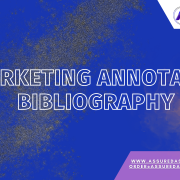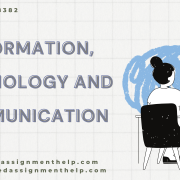Introduction
My position as an assistant manager for the OnePlus mobile firm in the United Kingdom is part of my long-term professional growth goal. After years of employment, I have chosen to pursue a position as the company’s operations manager. I expect to begin training for this position within the next year. Therefore, I created a personal growth plan that is aligned with the company’s development plans. My personal growth plan was affected by several tactics that I used in various activities that were connected to the assignment I had just completed. Task 1 and Task 2 make up the first half of the reflective report. This is a report on assignment 1, which began by introducing myself and then laying out the steps I would follow to further my education and career. In addition, the ideas that I utilize in my work and how I use them to create my professional growth plan are provided in this document.
Task 1: Reflection on management and leadership for strategic ambitions
1.1 An Overview of my work history and career goals
Recently, I served as the assistant manager for OnePlus UK, and now I’m applying for the position of Operation head in the company so that I may take on more responsibilities. For the sake of my career, I’d want to work for this company and oversee its worldwide business operations (Tudor Car et al., 2018). At the moment, I’m an assistant manager in charge of all things worldwide business. This has allowed me to get the necessary knowledge and abilities to be considered for the position of administrative head in the company. The more I learned about the criteria, the more certain I became that I could complete the assignment on time and budget. According to Pellegrini et al. (2020), a combination of academic training and practical experiences as an assistant manager has prepared me for the role of operations head. Aside from that, I believe that my previous work experience qualifies me for the post of OnePlus’ operational chief, where I’ll be in charge of the company’s worldwide business operations.
Even though I’ve been an assistant manager at OnePlus for many years, I’ve always wanted to be an HR manager. While following Pellegrini et al. (2020), I have defined my goals and ambitions in such a manner that I can manage the obligations and tasks of the HRM. Additionally, I designed my professional growth plan in a manner that would allow me to take on such a large role. As a result, I gained information about this field and finished my education, allowing me to contribute to this discussion. In addition, I researched several ideas that might help me handle the responsibilities and obligations associated with my selected career path (De Clerk et al., 2021). As a result, I believe that the position of operational head at OnePlus is one that I am well-suited for and that I am capable of doing well in. If I have previous experience as an assistant manager overseeing worldwide business operations, which will help me in my new role. In light of these facts, I am optimistic about the impact my job experience will have on my future career path.
1.2 Management development
According to De Clerk et al. (2021), this is what I did in my role as assistant manager: I operated as the manager and carried out my obligations at various levels. As a result, I was able to develop my talents and handle numerous disciplines linked to the assignment as a result of this method. In managing many departments at once, I was able to draw on my knowledge of various fields and specialties gained through my experience across a variety of professions and industries. Thus, this method was advantageous to me since it allowed me to learn more about the subject matter and improve my ability to complete the work at hand. Additionally, my ability to grow my expertise as the manager of the organization was enhanced by the use of this management development strategy (Heckman and Minnes, 2022). My colleagues’ performance has improved as a result of this management development process, which has not only helped me improve as an individual but has also benefited them as well. As a result, I was able to contribute to the development of the firm as an assistant manager in several ways thanks to this strategy.
Throughout my time as an assistant manager, I used a variety of strategies to help me succeed in my role. According to Heckman and Minnes (2022), one of those strategies was the management development approach. That the method was a success had everything to do with how well it aided in addressing the company’s current and future needs. I was also encouraged to serve my function and do my duties without much trouble, which was helpful in and of itself, as I said. Another essential factor in the success of this strategy would be that it assisted me as an assistant manager in my growth program and planning, which gave me direction toward increasing my talents (Hahn and Gil Lapetra, 2019). This method also identifies my prospective talents and deepens my experiences, which aided me when pursuing the post of the organization’s operational head. In addition, I devised several tactics to help motivate and teach my personnel more progressively.
1.3 Leadership
If you want to operate with a team, you will need to pick and adopt a style of leadership carefully (Hahn and Gil Lapetra, 2019). As a former assistant manager, I have had some experience in managing a group of people. That’s not all; in addition, I wanted and am qualified to work for OnePlus as the firm’s worldwide business manager. As a result, I must play the job of HR within the company as I have elected to function as the operational head. According to Geib and Boenigk (2022), I must also collaborate in my new career path. If that’s the case, then I’ll have to spend a lot of time with my co-workers and others from the business. As a result, I must carefully pick my leadership style to ensure that I can effectively manage my team and workers. As a result, I drew on my past experiences and made a conscious decision to use a certain style of leadership in my role as the company’s operational president. To achieve my long-term professional objective, I want to focus mostly on problem-solving and issue minimization.
As an assistant manager, I learned that a leader’s style is constantly influenced by the context in which he or she finds themselves. An established leadership strategy may not be appropriate at all times, thus leaders ought to be ready for any event or problem that may arise (Geik and Boenigk, 2022). Therefore, as the OnePlus smartphone firm’s operational chief, I would choose to use both transformational and strategic leadership styles to manage the company’s worldwide operations. I’ve learned that these types of leadership styles are often able to successfully manage the team from my prior experience as an assistant manager. However, as per Sauphayana (2021), I’m able to adapt my strategy to my team based on the circumstances thanks to transformative leadership. This means that to create it, I need to be ready to deal with a variety of situations and adaptable enough to do so. Because I can constantly push my staff to think outside of the box and accomplish the assignment, this one will assist me to improve their performance. A key benefit of strategic leadership is the ability it provides for the organization to expand. According to Sauphayana (2021), a company’s operational head may find this kind of management ideal since it helps to provide a stable working environment for all personnel.
1.4 Strategic decision-making
As the chief of operations, it is incumbent upon me to make decisions that affect the company’s day-to-day operational processes. The operational head’s responsibilities include bringing software solutions for the work, developing the policy, and assuring service to customers, among other things. In addition, the operational head is also responsible for HRM operations (Sauphayana, 2021). Part of the hiring and recruiting process involves interviewing job applicants and delivering employees with development and training programs, as well as guiding the work, selecting staff, reviewing the performance of employees through appraisals, and so on. The operational manager must have a clear strategic strategy to function in this profession (Doyle and Brady, 2018). As a result, Doyle and Brady (2018), claim to keep the many departments running well, each employee must make choices that will benefit the business in the long term and help it develop. As a result, I concluded that to serve as the OnePlus mobile company’s operational leader, I must have a clear strategy for making strategic decisions and executing them as I carry out my duties.
Consequently, I must choose an appropriate strategic plan that aids and guides me in the decision-making process to perform my duties as the operational director. Because of this, I’m going to go with the analytical decision-making strategy, which will help me both handle the work strategically and achieve long-term success as a result of my decision. Decisions may be made by the situation’s needs using this paradigm. After taking into account the surrounding environment and the facts available, judgments should be made. For instance, Doyle and Brady (2018), using this method, the best and most appealing options may be made. This is the best method for concluding since it is progressive and systematic. Breaking the choice down into smaller pieces and recognizing the links between them, serves as an effective technique for understanding the bigger picture (Seidel et al., 2019). As a result, this explanatory approach to strategic decision-making is what I’ll use to get to the goal I’ve set with the data I need to complete the job. In this situation, communication is much more efficient and straightforward, and this has led to excellent outcomes.
1.5 Role of Ethics and Value-based HRM within an organizational context
As a result of my interest in and application for the position of the operational head at OnePlus Mobile, I am required to execute certain HR operational operations for the company’s internal human resources system to be effectively managed and maintained. Thus, human resource management is a critical discipline upon which the whole work is built (Seidel et al., 2019). While fulfilling the duties of the operational head and overseeing the company’s worldwide business operations, I am also responsible for several other ethical obligations. The creation of the budget and the improvement of corporate policy are two significant components of this task. Effective HR, on the other hand, according to Mango (2018), must have substantial expertise in the field, which includes a thorough understanding of their position and ability to carry out their responsibilities. My experience as an assistant manager inside the organization has provided me with some understanding of human resource techniques that I can put to use if I am chosen for the position of operational director. Using this applicable experience, in addition to my grasp of budget planning and approval, I may contribute to value-based HRM activities.
According to Mango (2018), day-to-day functions and HR transactions are all part of a company’s human resources management (HRM) efforts. In contrast to strategic HR practices, where a long-term aim is set and actively pursued, this approach does not have a long-term focus. However, Lee (2021), claims everyday transactions are important for the management of human resources in this sector; thus, they must be included here as well. In addition, I need to examine the measures that are needed to achieve the strategic achievement of the value-based goals. It’s also important for me to deal with OnePlus’ organizational policies and see whether they’re effective for ongoing progress and innovation ethically. As the operational head of HR, I’m also responsible for maintaining the company’s internal database, which I’ve always needed to compile information ethically from throughout the organization to implement HRM’s functional components. In addition, I’m also responsible for overseeing the company’s human resources, so that I can guarantee that all of the company’s human resources are used appropriately and ethically and that the company’s performance is enhanced.
1.6 Mintzberg’s managerial roles
According to Mintzberg’s management duties, while working as an assistant manager at OnePlus, I was also responsible for doing some of the managerial tasks (Megheirkouni and Megheirkouni, 2020). Since there are so many theories on how management tasks should be distributed, I stuck to the idea religiously. It is based on concepts like these that I’ve carried out management actions, which has enabled me to simplify jobs that would otherwise be quite complex. Because of this, the major reason I made use of this strategy was to break down complicated tasks into smaller, more manageable parts. However, Lee (2021), states there may be an extra obstacle to reaching the goal of the difficult activities that need a lot of time and thought. To make it more manageable, I’d break it down into a series of smaller tasks, each of which could be completed on its own. This strategy works well because it is in line with the company’s culture and allows workers to specialize in their particular areas of responsibility while yet allowing them to grow as a whole.
As an assistant manager, I was also responsible for leading my staff. As a result, I was able to settle several disputes and disagreements inside the company. In addition, contract renewals, negotiations, and other contract-related activities are also undertaken. As a result, I was able to fulfill both my management duties as well as those of the team’s leader. I was also responsible for both the informational and interpersonal aspects of the job, which helped me make my strategic judgments. I utilized Mintzberg’s management theory to prioritize my assignments since I held many positions and was responsible for a wide range of responsibilities across different fields (Altamony and Gharaibeh, 2018). My team members were allocated duties based on their expertise in a variety of fields. In this manner, every one of them is given a specific duty and may demonstrate their abilities and enhance their skills via this method.
1.7 Motivation
According to Basarangil (2020), maintaining staff motivation is a key responsibility of the operations manager. Employees will benefit from this encouragement, which will keep them motivated to do their work. As a result, one of my responsibilities as an operational leader is to instill a sense of purpose and fulfillment in the work of my team members. To keep the team engaged and on track to meet deadlines, I needed to act as the assistant manager at OnePlus. In addition, since I’m applying for the position of operations manager inside the firm, I’ll have to deal with a significant number of employees. In addition, I am held accountable for human resources management, which implies that I am responsible for maintaining open lines of communication with my staff (Sobaih and Hasanein, 2020). As a result, I need to come up with a strategy that will help me engage and encourage my personnel in their various job functions. To do this, I must choose a theory that will inspire my workers and team members.
I was able to use Herzberg’s theory of motivation in this situation. With this approach, I will be able to better manage my workers by ensuring that they are engaged and motivated to work. Morale boosters and hygiene factors are two types of elements that might influence employee motivation, according to this idea (Chiat and Panatik, 2019). The combination of these two variables ensures that the workers are motivated to work. Therefore, I must guarantee that my staff has both of these elements met for them to be motivated and perform at a high level. I need to make sure that all of my staff can succeed, get sufficient acknowledgment, and have the opportunity to display their work to keep them motivated. According to Hur (2018), I need to make sure that my staff has a clean working environment because if they don’t, they will be unhappy. If I want to prevent this, I need to make sure that workers are happy and engaged at work by enhancing their working conditions, policies, and compensation.
1.8 Analysis of professional development plan
I have to improve my leadership skills as part of my professional development plan, which I discovered to be lacking. A huge group of workers was my responsibility as assistant manager, and I handled them with a suitable leadership style. To be a more effective operational manager, I must adapt my leadership style to better meet the demands of this new position. My ability to manage the worldwide business operations of the organization will be enhanced if I can introduce and expand upon some of my marketing talents and knowledge and skills in this area, as well. To make the most of these skills in the future, I must share and document my past knowledge and experiences.
Conclusion
This reflection study is based on the evaluation of a person who is now an assistant manager at the OnePlus smartphone firm and aspires to become the company’s operational head. There are two sections to each portion of the report, which outline the person’s professional development plan in detail. Several hypotheses are presented in the report’s first section, and the formulation of a professional development strategy is then based on that. The examination of the professional development plan is contained in the next section. However, in the next section, a short proposal is made that may be utilized for future development based on the research.
Reference List
Altamony, H. and Gharaibeh, A., (2018). The role of the academic researcher to Mintzberg’s managerial roles. International Journal of Business Management and Economic Research, 8(2), pp.920-925. https://omarismailameenmohamedalkhoori.com/wp-content/uploads/2019/06/Journal-1.pdf
Başarangil, İ., (2020). A CASE STUDY WITHIN EVALUATION IN MANAGERIAL LEVEL OF MİNTZBERG’S MANAGERIAL ROLES. https://www.researchgate.net/profile/Ilke-Basarangil/publication/315812313_MINTZBERG’IN_YONETSEL_ROLLERININ_YONETICI_DUZEYINDE_DEGERLENDIRILMESI_KAPSAMINDA_BIR_ORNEK_OLAY_INCELEMESI_A_CASE_STUDY_WITHIN_EVALUATION_IN_MANAGERIAL_LEVEL_OF_MINTZBERG’S_MANAGERIAL_ROLES/links/5d27067aa6fdcc2462d4b6a2/MINTZBERGIN-YOeNETSEL-ROLLERININ-YOeNETICI-DUeZEYINDE-DEGERLENDIRILMESI-KAPSAMINDA-BIR-OeRNEK-OLAY-INCELEMESI-A-CASE-STUDY-WITHIN-EVALUATION-IN-MANAGERIAL-LEVEL-OF-MINTZBERGS-MANAGERIAL-ROLES.pdf
Chiat, L.C. and Panatik, S.A., (2019). Perceptions of employee turnover intention by Herzberg’s motivation-hygiene theory: A systematic literature review. Journal of Research in Psychology, 1(2), pp.10-15. https://readersinsight.net/jrp/article/download/949/752
De Clerck, T., Aelterman, N., Haerens, L. and Willem, A., (2021). Enhancing volunteers capacity in all‐volunteer nonprofit organizations: The role of volunteer leaders’ reliance on effective management processes and (de) motivating leadership. Nonprofit Management and Leadership, 31(3), pp.481-503. https://biblio.ugent.be/publication/8686629?gathStatIcon=true
Doyle, T. and Brady, M., (2018). Reframing the university as an emergent organization: implications for strategic management and leadership in higher education. Journal of Higher Education Policy and Management, 40(4), pp.305-320. https://www.tandfonline.com/doi/abs/10.1080/1360080X.(2018).1478608
Geib, N. and Boenigk, S., (2022). Improving nonprofit succession management for leadership continuity: A shared leadership approach. Nonprofit Management and Leadership. https://onlinelibrary.wiley.com/doi/pdfdirect/10.1002/nml.21508
Hahn, C.A. and Gil Lapetra, M., (2019). Development and use of the leadership competencies for healthcare services managers assessment. Frontiers in Public Health, 7, p.34. https://www.frontiersin.org/articles/10.3389/fpubh.(2019).00034/full
Heckman, S. and Minnes, M., (2022), March. Academic Middle Management: Undergraduate Leadership in Computing Programs. In Proceedings of the 53rd ACM Technical Symposium on Computer Science Education V. 2 (pp. 1184-1184). https://dl.acm.org/doi/abs/10.1145/3478432.3499196
Hur, Y., (2018). Testing Herzberg’s two-factor theory of motivation in the public sector: is it applicable to public managers? Public Organization Review, 18(3), pp.329-343. https://link.springer.com/article/10.1007/s11115-017-0379-1
Lee, M.R., (2021). Leading virtual project teams: Adapting leadership theories and communications techniques to 21st-century organizations. Auerbach Publications. http://students.aiu.edu/submissions/profiles/resources/onlineBook/B2t4W4_leadership%20virtual%20projects%20teams.pdf
Mango, E., (2018). Rethinking leadership theories. Open Journal of Leadership, 7(01), p.57. https://www.scirp.org/html/5-2330143_83142.htm
Megheirkouni, M. and Mejheirkouni, A., (2020). Leadership development trends and challenges in the twenty-first century: rethinking the priorities. Journal of Management Development. https://www.emerald.com/insight/content/doi/10.1108/JMD-04-(2019)-0114/full/HTML
Pellegrini, M.M., Ciampi, F., Marzi, G. and Orlando, B., (2020). The relationship between knowledge management and leadership: Mapping the field and providing future research avenues. Journal of Knowledge Management. http://eprints.lincoln.ac.uk/id/eprint/40953/1/JKM_Leadership_Final.pdf
Sauphayana, S., (2021). Innovation in Higher Education Management and Leadership. Journal of Educational and Social Research, 11(6), pp.163-163. https://www.richtmann.org/journal/index.php/jesr/article/download/12732/12332
Seidel, A., Saurin, T.A., Tortorella, G.L. and Marodin, G.A., (2019). How can general leadership theories help to expand the knowledge of lean leadership? Production Planning & Control, 30(16), pp.1322-1336. https://www.researchgate.net/profile/Andre-Seidel-3/publication/332963831_How_can_general_leadership_theories_help_to_expand_the_knowledge_of_lean_leadership/links/5cffc5374585157d15a2efe1/How-can-general-leadership-theories-help-to-expand-the-knowledge-of-lean-leadership.pdf
Sobaih, A.E.E. and Hasanein, A.M., (2020). Herzberg’s theory of motivation and job satisfaction: Does it work for the hotel industry in developing countries? Journal of Human Resources in Hospitality & Tourism, 19(3), pp.319-343. https://www.tandfonline.com/doi/abs/10.1080/15332845.2020.1737768
Tudor Car, L., Kyaw, B.M. and Atun, R., (2018). The role of eLearning in health management and leadership capacity building in the health system: a systematic review. Human resources for health, 16(1), pp.1-9. https://link.springer.com/article/10.1186/s12960-018-0305-9











